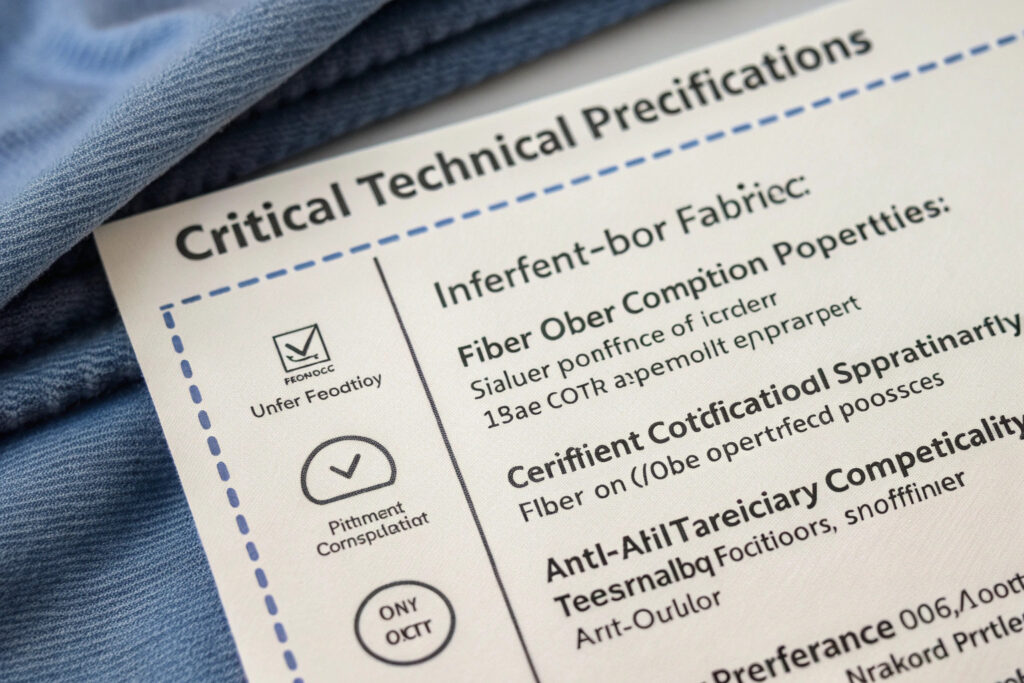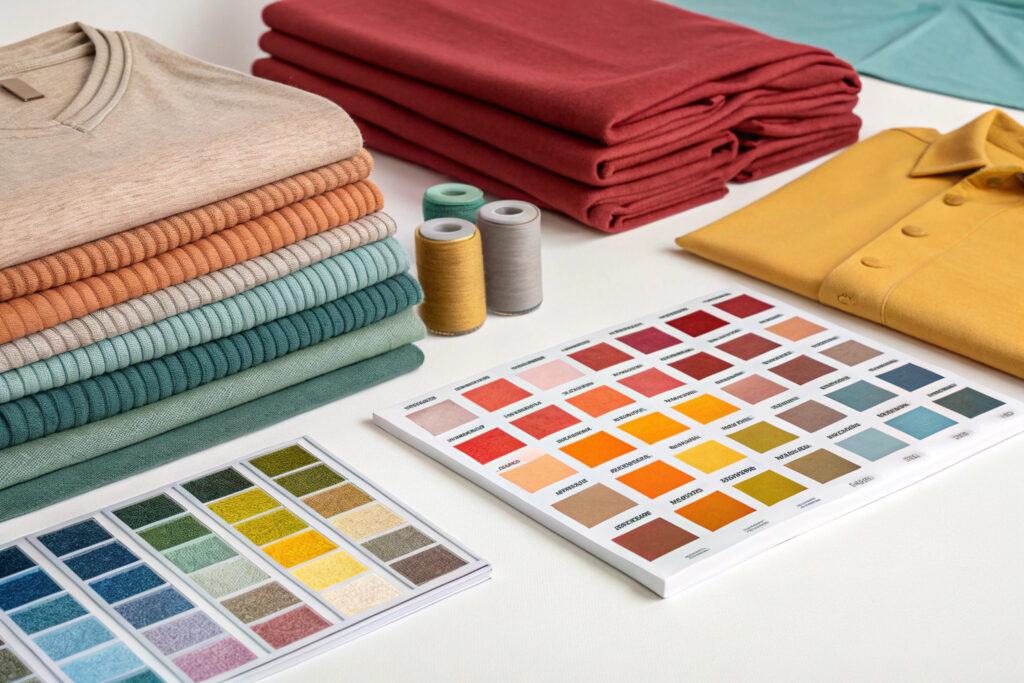Activewear brands and retailers increasingly recognize the value of coordinated performance sets, but sourcing matching anti-odor beanies and socks presents unique supply chain challenges. Standard matching sets often sacrifice technical performance for visual coordination, leaving consumers with stylish but functionally inadequate products. The search for suppliers who can deliver both perfect color matching and genuine anti-odor performance requires specialized manufacturing partnerships.
The most reliable way to source anti-odor socks-matching beanies is through manufacturers with integrated knitting facilities, technical fabric expertise, and established color management systems that ensure consistent hue matching across different knit structures while maintaining anti-odor efficacy throughout production and wear.These suppliers understand how to balance aesthetic requirements with performance features across product categories.
This comprehensive guide explores the sourcing strategies, technical specifications, supplier qualifications, and quality control measures necessary to successfully procure coordinated anti-odor beanie and sock sets that deliver both visual harmony and functional performance.
What technical specifications ensure anti-odor performance?
Anti-odor performance requires specific technical approaches that go beyond simple fabric claims. Understanding these specifications helps distinguish genuine odor control from marketing hype when sourcing matching sets.
Critical technical specifications include fiber composition with inherent anti-odor properties, certification of anti-odor efficacy, compatibility between dye processes and anti-odor treatments, and testing protocols that verify performance across both product types.

How do silver-ion technologies work across different products?
Silver-ion technologies provide effective odor control by disrupting bacterial metabolic processes, but their application must be adapted for different product requirements. For beanies, silver is typically integrated into polyester or polyamide fibers during extrusion, creating permanent protection that withstands repeated washing. For socks, silver may be applied as a finish or incorporated into yarns specifically engineered for high-abrasion areas. The challenge in sourcing matching sets lies in maintaining consistent silver concentration despite different knitting structures—beanies typically use lighter weight knits than socks. Reputable suppliers conduct independent laboratory testing to verify equivalent anti-odor performance across both products, ensuring the set functions as a unified system.
Why are natural anti-odor fibers preferred for sensitive skin?
Natural anti-odor fibers like merino wool and bamboo viscose offer inherent odor resistance without chemical treatments, making them ideal for consumers with skin sensitivities. Merino wool contains naturally occurring lanolin derivatives that inhibit bacterial growth, while bamboo possesses antimicrobial compounds called "bamboo kun." When sourcing matching sets, the fiber blend must be optimized for each product's requirements—socks may require more synthetic content for durability, while beanies can use higher natural fiber percentages for comfort. The best suppliers develop custom blends that maintain visual consistency while optimizing performance for each product's specific use case, ensuring the set looks coordinated and performs appropriately for each application.
How to maintain color consistency across different products?
Color matching between beanies and socks presents significant technical challenges due to different knitting structures, wear patterns, and care requirements. Achieving perfect coordination requires sophisticated color management systems.
Consistent color across products involves standardized dyeing protocols, careful fiber selection, controlled production environments, and rigorous quality control measures that account for how colors appear on different knit structures.

Why is lab dip approval crucial for color matching?
Lab dip approval processes ensure color consistency before production begins. The most reliable suppliers create matched lab dips for both beanie and sock fabrics using the actual production materials and knitting structures. This approach accounts for how the same dye formula appears on different knit densities and fiber blends. During lab dip evaluation, colors should be assessed under multiple light sources (D65 daylight, store lighting, home lighting) to ensure the match holds across various environments. The approval process should include spectrophotometer readings with defined delta E tolerance limits (typically ≤1.0 for precise matching), providing objective data beyond visual assessment. This scientific approach prevents the disappointing color mismatches that undermine coordinated set value.
How do knitting structures affect color perception?
Knitting structures significantly impact color perception because light interacts differently with various surface textures. Socks typically use denser knit structures with more surface definition, while beanies often feature softer, loftier constructions that absorb more light. These structural differences can make identical dye formulas appear noticeably different. Advanced suppliers address this by creating custom color formulas for each product type that achieve visual harmony despite structural variations. They maintain extensive libraries of how colors translate across different knits, allowing them to predict and compensate for these perceptual differences during the development stage rather than discovering mismatches during production.
What supplier capabilities indicate reliable matching set production?
Sourcing successful anti-odor matching sets requires suppliers with specific capabilities that span multiple product categories. The right partners demonstrate integrated production and quality systems.
Essential supplier capabilities include vertical manufacturing control, technical expertise across product categories, robust quality assurance protocols, and experience with performance apparel manufacturing.

Why is vertical manufacturing advantageous for matching sets?
Vertical manufacturing—where the supplier controls production from yarn spinning through finishing—provides significant advantages for matching sets. Integrated facilities maintain consistent dye lots across production runs, control knitting parameters to ensure structural harmony, and implement unified quality standards. This control prevents the variations that occur when beanies and socks are produced in separate facilities then combined as sets. Vertical manufacturers can also coordinate production scheduling to ensure both products are manufactured in the same time frame using the same raw materials, further enhancing consistency. This integrated approach is particularly valuable for anti-odor products where treatment consistency directly impacts performance.
What quality control systems ensure set consistency?
Comprehensive quality control systems must address both individual product quality and set coordination. The best suppliers implement paired inspection protocols where beanies and socks are evaluated side-by-side for color match, then paired for final packaging. This process includes measuring anti-odor properties from both products to ensure equivalent performance. Additional checks verify that care instructions align between items and that packaging presents the set cohesively. These coordinated quality measures prevent the common issue of receiving perfectly good individual products that don't work together as a set. Suppliers should provide inspection reports specifically addressing set coordination rather than generic product quality metrics.
How to verify anti-odor performance claims?
Verifying anti-odor claims requires specific testing and documentation that goes beyond standard product quality assurance. Understanding verification methods ensures the sets deliver promised performance.
Effective verification includes reviewing independent test reports, understanding testing methodologies, evaluating treatment durability, and assessing real-world performance feedback.

What laboratory tests validate anti-odor efficacy?
Reputable anti-odor claims are supported by standardized laboratory testing such as AATCC Test Method 100 or ISO 20743, which quantitatively measure bacterial reduction after specified time periods. These tests should be conducted on both beanie and sock materials to verify consistent performance across the set. Look for test reports from accredited third-party laboratories rather than in-house testing, and ensure testing includes both initial efficacy and performance after multiple washes (typically 10-25 cycles). The best suppliers provide specific reduction percentages against common odor-causing bacteria like Staphylococcus aureus and Klebsiella pneumoniae, demonstrating comprehensive protection rather than selective efficacy.
How can wear testing complement laboratory results?
Wear testing provides real-world performance data that laboratory tests cannot capture. The most thorough suppliers conduct controlled wear trials where participants use the matched sets during typical activities and provide feedback on odor development, comfort, and color retention. These trials should span multiple wears between washes to assess how the anti-odor properties perform under realistic use conditions. Wear testing also reveals how well the color matching holds up through use and laundering—an important consideration that laboratory color fastness tests alone cannot fully predict. This combination of scientific testing and real-world validation provides the most complete picture of set performance.
Conclusion
Sourcing successful anti-odor socks-matching beanies requires partners with specialized expertise in both performance textiles and coordinated set production. The most reliable suppliers combine technical capabilities for odor control with sophisticated color management systems that ensure visual harmony across different product types. From verified anti-odor efficacy to perfect color matching, each element must be carefully managed to create sets that deliver on both aesthetic and functional promises.
At Global-Caps, we've developed specialized capabilities for producing coordinated performance sets through our integrated manufacturing approach and technical textile expertise. Our anti-odor matching sets undergo rigorous testing to ensure both products perform consistently while maintaining perfect visual coordination. If you're looking to source anti-odor beanie and sock sets that deliver genuine performance with seamless aesthetics, contact our Business Director Elaine at elaine@fumaoclothing.com. Let us help you create coordinated collections that consumers trust for both style and function.







